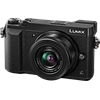Main
Model
Price
Advantages
launch
Announced
Body type
Camera subcategory
Sensor
Effective pixels
Max resolution
Sensor size
Sensor type
Processor
Image ratio w:h
Other resolutions
Sensor photo detectors
Image
ISO
White balance presets
Custom white balance
Image stabilization
Uncompressed format
Boosted ISO (minimum)
Image stabilization notes
JPEG quality levels
Photography features
Minimum shutter speed
Maximum shutter speed
Maximum shutter speed (electronic)
Aperture priority
Shutter priority
Manual exposure mode
Subject / scene modes
Built-in flash
External flash
Continuous drive
Self-timer
Metering modes
Exposure compensation
AE Bracketing
Flash range
Flash modes
WB Bracketing
Screen / viewfinder
Articulated LCD
Screen size
Screen dots
Touch screen
Screen type
Live view
Viewfinder type
Viewfinder coverage
Viewfinder resolution
Viewfinder magnification
Videography features
Resolutions
File Format
Microphone
Speaker
Videography notes
Optics & Focus
Focal length (equiv.)
Optical zoom
Maximum aperture
Autofocus
Digital zoom
Manual focus
Normal focus range
Macro focus range
Number of focus points
Focal length multiplier
Lens mount
Physical
Weight (inc. batteries)
Dimensions
Environmentally sealed
Battery
Battery details
Battery Life (CIPA)
Storage
Storage types
Connectivity
USB
HDMI
Microphone port
Headphone port
Wireless
Wireless notes
Remote control
Other features
Orientation sensor
Timelapse recording
GPS
Samples
Videos
Summary
The Q (Typ 116) maximum resolution of 6000 x 4000 pixels (24 megapixels) is better than the Panasonic Lumix DMC-GX85 (Lumix DMC-GX80 / Lumix DMC-GX7 Mark II) maximum resolution of 4592 x 3448 pixels (16 megapixels). The Q (Typ 116) is equipped with larger sensor compared to the Panasonic Lumix DMC-GX85 (Lumix DMC-GX80 / Lumix DMC-GX7 Mark II): Full frame (36 x 24 mm) versus Four Thirds (17.3 x 13 mm). This is very important difference between these models because big sensor lets the camera owner to make pictures of the better quality. The Q (Typ 116) offers a wider ISO range of 100-50000 in compare with 200-25600 ISO range of the Panasonic Lumix DMC-GX85 (Lumix DMC-GX80 / Lumix DMC-GX7 Mark II). This ISO range allow the camera owner to make better pictures in low light conditions.
The Panasonic Lumix DMC-GX85 (Lumix DMC-GX80 / Lumix DMC-GX7 Mark II) is produced with tilting display that will allow the camera owner to take pictures from any interesting angle. The Panasonic Lumix DMC-GX85 (Lumix DMC-GX80 / Lumix DMC-GX7 Mark II) provides better minimum (60 seconds) and highest (1/4000 second) shutter speeds.
The Panasonic Lumix DMC-GX85 (Lumix DMC-GX80 / Lumix DMC-GX7 Mark II) is equipped with built-in flash. The Panasonic Lumix DMC-GX85 (Lumix DMC-GX80 / Lumix DMC-GX7 Mark II) weighs 426g which is 214g lighter than the weight of the Leica Q (Typ 116).
Taking into account the above-mentioned differences the Leica Q (Typ 116) will become the best buy. Get the list of the best offers on Amazon.


